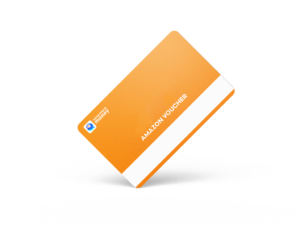
A cash Individual Savings Account (ISA) allows you to save up to £20,000 a year tax-free, while earning interest on your funds.
There are different types of cash ISA, with varying interest rates, charges and benefits. So, for example, depending on your needs, you could choose an account that locks away your funds for an agreed period of time but offers a high interest rate, or you could choose one that you can withdraw from at your leisure but that offers a lower interest.
In this article we’ll explain exactly how cash ISAs work, including withdrawals, transfers, rates and charges, as well as how to pick the most suitable account for you.
What is a cash ISA?
A cash ISA is a savings account that allows you to save money without paying tax on your interest. You can only open one cash ISA a year. You can also transfer funds from existing ISAs to an alternative provider or another type of ISA. A cash ISA is one of four types of ISA, including stocks and shares ISAs, innovative finance ISAs, and Lifetime ISAs.
As long as you’re a UK resident and you’re over the age of 16, you can open a cash ISA.
How does a cash ISA work?
You can open a cash ISA with a bank, building society, stock broker, peer-to-peer lending service and many other financial institutions.
Regardless of what type of cash ISA you open, and where you open it, for the tax year 2023/24, you can save anything from the minimum opening amount of £1 up to £20,000 – the current maximum personal allowance. You can also choose to split this allowance across multiple ISAs.
For example, you could save £18,000 in your cash ISA and £2,000 in your stocks and shares ISA. Any savings will remain in your ISA tax-free for as long as you maintain the accounts.
Types of cash ISA
Cash ISAs can be either variable rate (instant/flexible) or fixed-rate. With an instant cash ISA, you can withdraw money whenever you like, although this doesn’t reset your tax-free allowance. For example, if you’ve saved £20,000 between April and the following February, and you withdraw £2,000, you’ll have to wait until April again before you can deposit any more money.
With a flexible cash ISA, you can pay in and withdraw money without affecting your allowance. For example you could deposit £10,000, then later need to withdraw £5,000 for an emergency. You still have the option of depositing up to £15,000 by the end of the tax year, without going over your personal allowance. This feature prevents savers from being penalised if they need to access their savings.
A fixed-rate cash ISA locks your money away for an agreed term, typically one to five years, in return for a guaranteed fixed interest rate. While you’ll be able to generate higher returns on your savings, you’ll be charged a penalty for early withdrawals.
Can I transfer my cash ISA?
Yes, you are allowed to transfer your cash ISA from one provider to another, or from one type of ISA to another, whenever you want. However, to ensure the money remains tax-free, you have to contact your new provider and fill in an ISA transfer form (unless you have a flexible ISA).
If you’re transferring money from the current tax year, you have to transfer all of it. If you’re transferring savings from a previous year, you can choose how much to transfer. It shouldn’t take longer than 15 days to transfer between cash ISAs.
Be aware that, while your current provider can’t stop you transferring your ISA, your preferred provider doesn’t have to accept transfers, and may charge fees or penalties for doing so.
Cash ISA rates and charges
Interest rates and charges vary between providers and types of cash ISA. Depending on the type of account you have, your interest rate will be fixed or variable.
Instant access and flexible accounts offer lower, variable interest rates, which can be as high as 3.2%*.
Fixed-term ISA interest rates are higher than those for instant access accounts, generally over 4%*, but your money will be locked away for several years. The best interest rates can often be accessed on a two-year term, so there’s little to be gained from tying yourself into a longer contract.
Penalties for withdrawals are charged as days’ worth of interest. This could be as low as 90 days’ interest and as high as 365 days’ of interest, currently.
How do I choose a cash ISA?
There are many factors to consider when choosing a cash ISA – it’s not as simple as just finding the best interest rates. Here are some key things to look out for when making your decision:
- Teaser rates – to tempt you in, some providers offer higher interest rates that are only valid for a short period of time. Make sure to comb through the small print with a fine tooth comb to see how the interest rate is structured
- Pay out frequency – some cash ISAs pay you interest monthly and some pay annually. It really just comes down to preference here, but if you’d prefer to receive your interest more frequently, find one with monthly payments
- Fixed-term high interest – watch out for fixed-term cash ISAs with high interest rates. Also known as structured deposits, your return on investment depends on certain criteria being met, such as an increase in the FTSE 100 index over a five-year term. This means you might wait a long time or even never see a return
* Interest rates change and this is indicative of rates at the time of writing.


